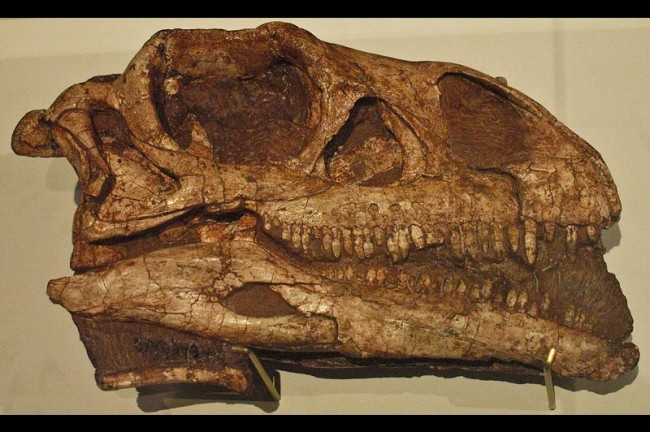
Print the 3D replica of 200-million-year-old dinosaur
The tireless efforts of a Ph.D. student have finally shown some colors with good news for owners of a 3D printer. You can now easily print a dinosaur inside the four walls of your home and that too in three dimension version. Now, this might not be as accurate as creating replicas with the scale of actual ones. However, any fan of archeology can make their own individual copy of the skull of a dinosaur by acquiring an everyday 3D printer.
A recent research by Kimi Chapelle from the University of Witwatersrand has made it easy for the researchers interested in the history of these Jurassic monsters to study it via a new aspect. A new CT scanning facility was implemented by the Ph.D. student belonging to the Johannesburg, South Africa University to take a peek into the skull belonging to a dinosaur.
The findings of this research have been made public to allow it to be downloaded by anyone who owns a 3D printer. The download comes with the surface file with data of the skull that helps recreate the exact kind of dinosaur skull in 3D version. Now, this means any researcher or enthusiast can make a Massospondylus at the convenience of their home.
This particular dinosaur belonged to the long-necked version of sauropodomorphs that thrived during the beginning of Jurassic Period. The remnants of this dinosaur were first discovered in the year 1854 in South America. It was then named by Sir Richard Owen who was a famous explorer and anatomist. The highest number of studies regarding the dinosaur has been done over the eggs and spines while there was very less for the skull.
Chapelle found out that a few aspects of the construction this skull was rather interesting like the partially fused bones surrounding the brain of the Massospondylus. The researcher also located the connections of the nerves inside the skull and their respective pathways. She stated that there is still a lot to be learned about these South African dinosaurs.
South Africa attracts a lot of scientists due to the rich diversity of dinosaur fossils being found in this area. Another team analyzed the Heterodontosaurus found in the year 2005. These researchers from the University of Witwatersrand worked their way through these challengingly small skeletons in the year 2016 as it was highly delicate. The skeleton was also hardened by surrounding rocks. The team used an X-ray with high energy to successful reconstruct this skeleton instead of causing some potential damage to the structure.
Chapelle implemented the same technique while studying the skull. Chapelle explained that on the comparison of the inner ear of this skull to that of other dinosaurs, we can easily interpret various basics of their structure. One can easily see that the Massopondylus continuously replaced the teeth similar to the present age crocodiles. However, humans can do the same only once.
The partially fused bones meant that this skull belonged to a dinosaur that hadn’t entered its adulthood. This opens up many ways to understand the growth pattern of these species of dinosaur. This latest 3D project could help students understand the basics of Jurassic era by the use of modern technology. This is a whole new and easier way of studying the dinosaurs and similar animals belonging to the prehistoric era.


